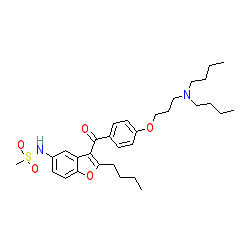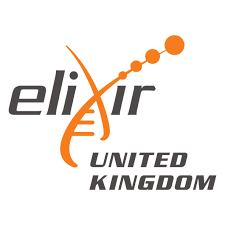|
Synonyms: Multaq® | SR-33598B
dronedarone is an approved drug (FDA and EMA (2009))
Compound class:
Synthetic organic
Comment: Dronedarone is a class III antiarrhythmic drug. It is a noniodinated analogue of amiodarone. The marketed formulation contains the hydrochloride salt (PubChem CID 219025).
Ligand Activity Visualisation ChartsThese are box plot that provide a unique visualisation, summarising all the activity data for a ligand taken from ChEMBL and GtoPdb across multiple targets and species. Click on a plot to see the median, interquartile range, low and high data points. A value of zero indicates that no data are available. A separate chart is created for each target, and where possible the algorithm tries to merge ChEMBL and GtoPdb targets by matching them on name and UniProt accession, for each available species. However, please note that inconsistency in naming of targets may lead to data for the same target being reported across multiple charts. ✖
View more information in the IUPHAR Pharmacology Education Project: dronedarone |
|
|||||||||||||||||||||||||||||||||||
| No information available. |
Summary of Clinical Use  |
| Approved to treat life-threatening atrial flutter and fibrilation by restoring synus rhythm. |
Mechanism Of Action and Pharmacodynamic Effects  |
| Dronedarone's mechanism of action is complex, with clinical efficacy arising from actions as a multi-channel blocker, affecting potassium, sodium and calcium currents, as well as antagonism of α- and β-adrenoceptors. Inhibition of sodium and potassium currents appears to prolong the duration of action potential and refractory period in myocardial tissue. Additionally, inhibition of calcium channels and antagonism of β1-adrenoceptors may decrease the abnormal AV conduction and sinus node function associated with atrial fibrillation. Studies in pigs suggest that inhibition of the sinoatrial node If current via HCN channels is the principal mechanism underlying dronedarone's bradycardic action [4]. Dronedarone's antifibrillatory action may also be attributed, in part, to inhibition of inward-rectifier potassium channels, especially Kir2.1 [3,6]. |
External links  |
|
For extended ADME data see the following: Electronic Medicines Compendium (eMC) Drugs.com European Medicines Agency (EMA) |








